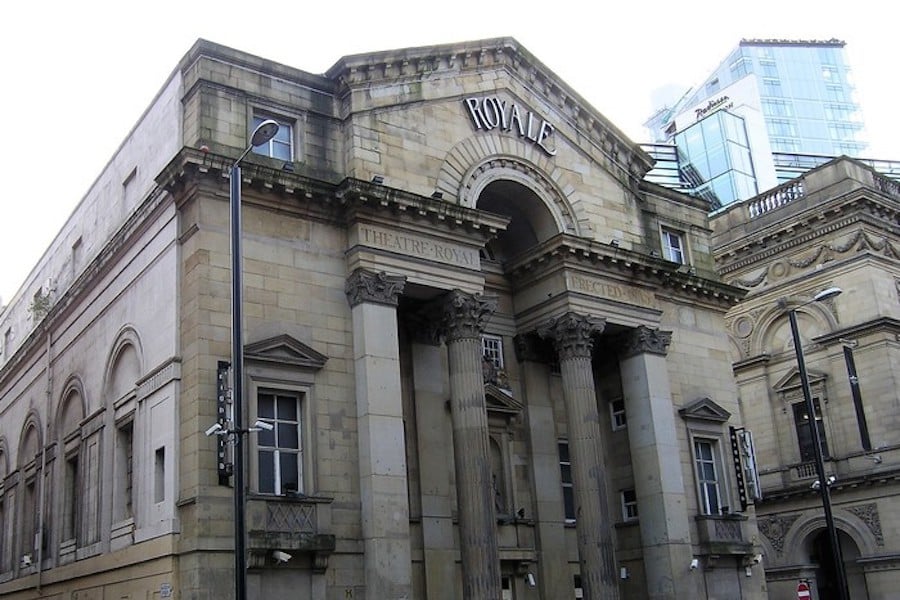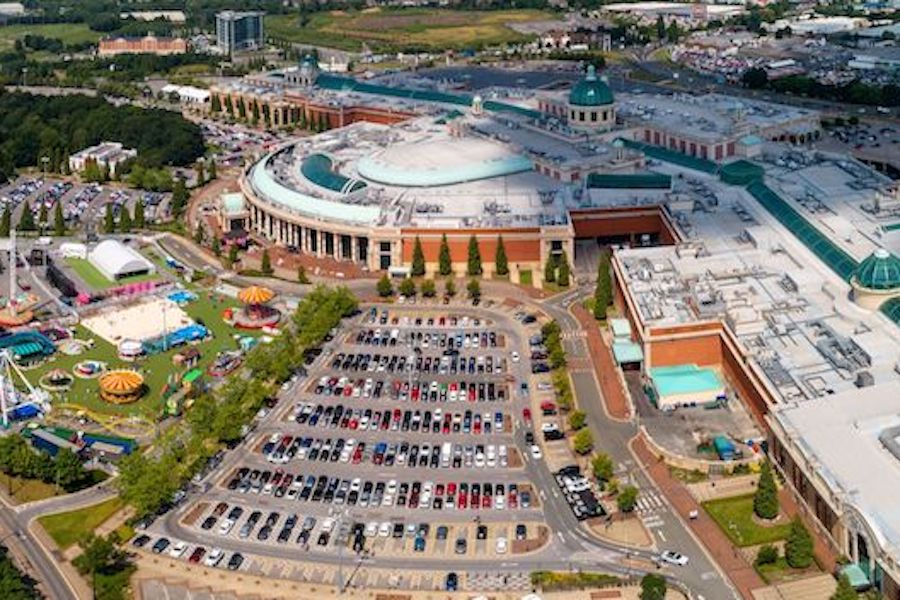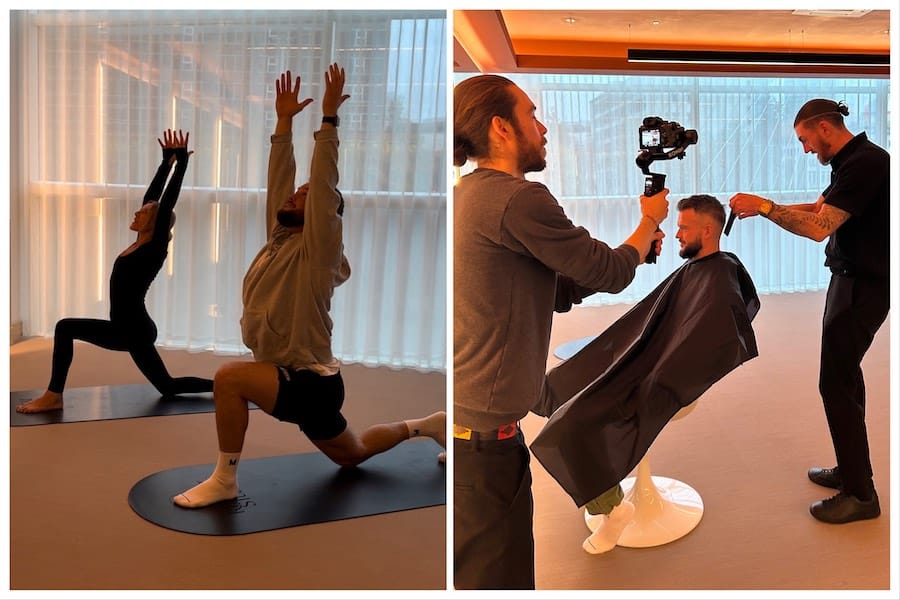‘The perfect piece of pop architecture’ or eyesore in need of demolition? What’s next for the Toast Rack?
- Written by Thom Bamford
- Last updated 5 months ago
- City of Manchester, Featured, History
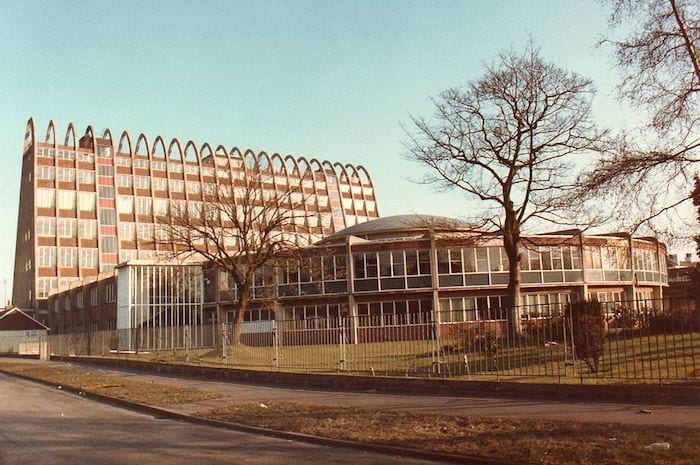
Nestled quietly in Fallowfields, far from the glass towers and tech hubs of the city centre, lies a building that has both fascinated and baffled Mancunians for over six decades.
Some view it as an architectural marvel, a playful nod to modernist optimism in post-war Britain.
Others, well, they’d happily see it crumbled into toast crumbs.
The Toast Rack

Yet, love it or hate it, the Toast Rack — formally known as the Hollings Building — remains a symbol of Manchester’s quirky architectural spirit.
As it sits on the brink of another transformation, its place in the city’s ever-changing skyline feels more important than ever.
It begs the question, do we want challenging and unusual buildings like the Toast Rack, or more modern-style skyscrapers that are currently lighting up Manchester’s skyline?
Completed in 1960 as the centrepiece of a catering college, the Toast Rack was the brainchild of Leonard Cecil Howitt, the city’s Chief Architect at the time.
The building’s design, an ambitious mix of modernist and brutalist elements, drew immediate attention.
With its concrete arches tapering skyward like a rack of toast slices and an adjoining circular building affectionately known as the “Fried Egg,” it was — and still is — like nothing else in Manchester.
Or anywhere, for that matter.
What style is the building built in?
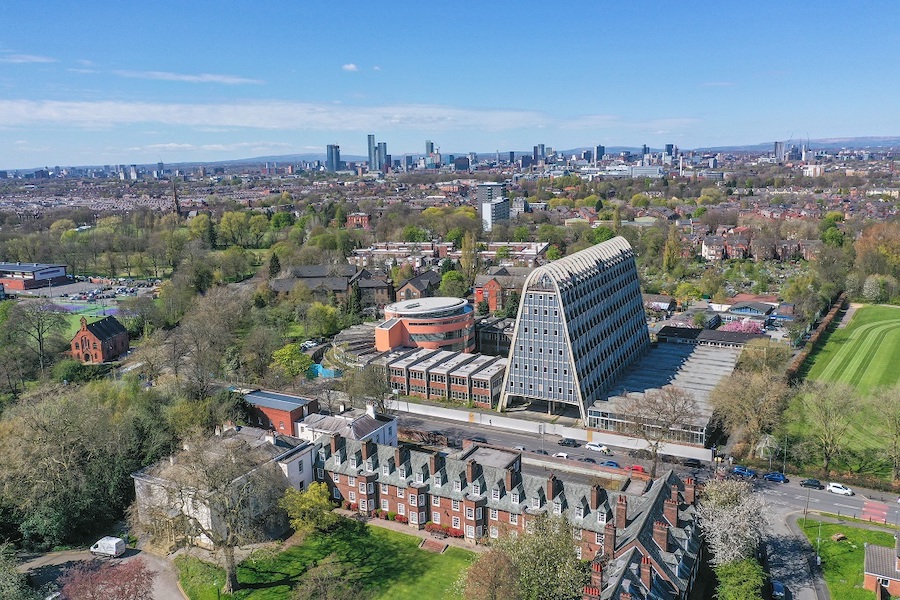
On paper, it might seem absurd: a catering college designed to look like kitchen equipment.
But to Howitt, it was a playful expression of the building’s purpose.
The sweeping curves and striking angles were an embodiment of the Festival of Britain spirit — a post-war celebration of innovation and creativity.
Critics called it “pop architecture” at its finest; a cheeky, irreverent twist on the modernism that was sweeping across Europe.
At first, the public didn’t know what to make of it.
Its design was met with bemusement, and some scoffed at the idea that such a “bizarre” building could be anything but a joke.
But over time, the Toast Rack wormed its way into the city’s heart, much like the Beetham Tower would decades later.
An Endearing Oddity
In 1998, English Heritage granted the building Grade II listed status, cementing its place in the architectural history books.
They praised its “structural gymnastics” and its ability to stand out as a distinct and memorable building in a city known for its rich industrial past. It was more than just a catering college — it had become a beloved oddity.
Yet not everyone was so fond. For every Mancunian who cherished its eccentricity, there were others who couldn’t help but wrinkle their noses at the sight of its concrete paraboloid ribs, describing it as a relic of an architectural era best left forgotten.
It’s this duality that makes the Toast Rack so fascinating.
Much like the Beetham Tower or even London’s Gherkin, it occupies that strange space between iconic and infamous.
And as Manchester’s skyline has grown and changed, with sleek glass towers and modern office blocks dominating the horizon, the Toast Rack stands as a reminder of the city’s bold, sometimes divisive, architectural heritage.

Manchester Metropolitan University is set to make a bold architectural statement once again with its upcoming state-of-the-art library.
We absolutely love it, but what do you think of it?
Approved by Manchester City Council in February 2024, the new building will replace the current library at All Saints on Oxford Road. Designed by renowned architects Hawkins\Brown and Schmidt Hammer Lassen, the library promises to be a vibrant, digitally advanced hub for learning, research, and collaboration.
Slated for completion in 2028, just in time for the 2028/29 academic year, the new facility will feature cutting-edge technology to support data science and analytical skills, alongside flexible breakout spaces for creativity.
It will also house Manchester’s Poetry Library, the Special Collection Museum, and new public gallery spaces. This iconic new building is expected to redefine the university’s architectural presence on Oxford Road, marking another step in Manchester Met’s 200-year legacy of innovation and education.
Future of the Toast Rack?
By the time the Manchester Metropolitan University decided to vacate the Hollings Campus in 2013, the building’s future was uncertain.
Left empty, the Toast Rack sat idle, a quirky remnant of Manchester’s mid-century vision.
Then came its sale in 2014, when a £5 million deal handed the site over to developers with dreams of transforming the building into luxury apartments, gym spaces, and leisure centres.
The Gym Group moved in, bringing with it a bustling fitness hub, while plans for over 200 residential units and a rooftop garden promised a new lease on life for the iconic structure.
Now the 3.71 acre site, which comprises the Toast Rack, Horseshoe, Gateway site and Stitching Hall, has been put back on the market complete with detailed planning consent for 211 homes.
The approved planning consent would see a mix of one to four bed apartments created as well as 20,910 sq ft of gym and leisure space, 7,582 sq ft of commercial space and 154 car parking spaces split across the site.
As we stand in 2024, the future of the Toast Rack once again hangs in the balance.
It’s back on the market, with Estrela Properties looking to pass the baton to the next ambitious developer.
With plans for a complete overhaul of the 3.7-acre site, including over 200 new homes, commercial spaces, and that coveted rooftop garden, it’s clear that the Toast Rack is on the cusp of yet another transformation.
A Building for the ages?
And so, the Toast Rack, like the city itself, finds itself at a crossroads.
Is it destined to remain a beloved relic of the past, or will its latest evolution bring it new admirers, as it did in the 1960s?
As the building approaches its next transformation, questions remain about how it will fit into Manchester’s evolving architectural landscape.
Will it be embraced by a new generation of residents, attracted by the blend of history and modernity that the redevelopment promises?
Or will it continue to be viewed as an architectural curiosity—celebrated by some, but never fully accepted by others?
One thing is certain: the Toast Rack’s story is far from over.
As Manchester continues to grow and change, this quirky, divisive building will remain an enduring reminder of a time when architecture wasn’t afraid to be bold, and when Manchester wasn’t afraid to look forward.
What do you think of the Toast Rack?
Let us know [email protected]
You can find out more about the Toast Rack on Historic England by clicking here
- This article was last updated 5 months ago.
- It was first published on 23 September 2024 and is subject to be updated from time to time. Please refresh or return to see the latest version.
Did we miss something? Let us know: [email protected]
Want to be the first to receive all the latest news stories, what’s on and events from the heart of Manchester? Sign up here.
Manchester is a successful city, but many people suffer. I Love Manchester helps raise awareness and funds to help improve the lives and prospects of people across Greater Manchester – and we can’t do it without your help. So please support us with what you can so we can continue to spread the love. Thank you in advance!
An email you’ll love. Subscribe to our newsletter to get the latest news stories delivered direct to your inbox.
Got a story worth sharing?
What’s the story? We are all ears when it comes to positive news and inspiring stories. You can send story ideas to [email protected]
While we can’t guarantee to publish everything, we will always consider any enquiry or idea that promotes:
- Independent new openings
- Human interest
- Not-for-profit organisations
- Community Interest Companies (CiCs) and projects
- Charities and charitable initiatives
- Affordability and offers saving people over 20%
For anything else, don’t hesitate to get in touch with us about advertorials (from £350+VAT) and advertising opportunities: [email protected]

Chapel Street improvement plan to ‘rebalance the space in favour of pedestrians and cyclists’’

Skip the soppy stuff! The ultimate guide to celebrating friendship this Galentines Day
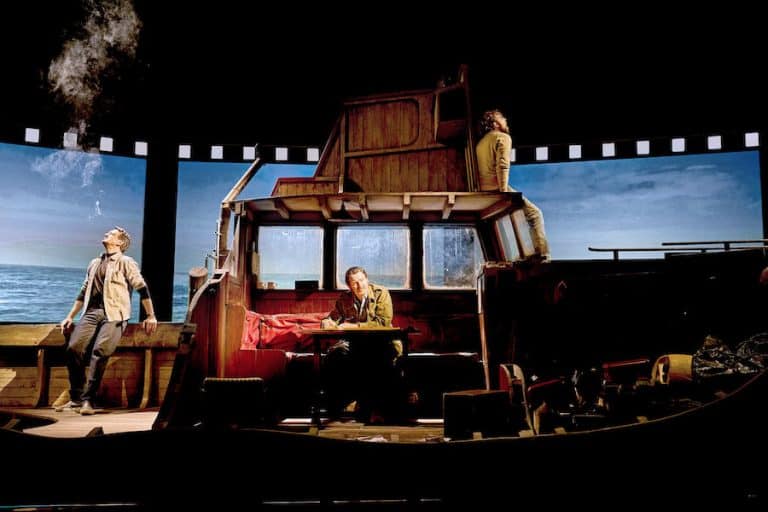
Review: The Shark is Broken at LOWRY is full of ‘humour, nostalgia and wit’

This is the place: Bury has the best market in Britain but what else has it got going for it?








